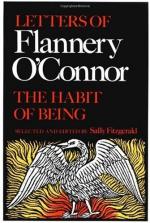|
This section contains 8,075 words (approx. 27 pages at 300 words per page) |

|
SOURCE: Carroll, Rachel. “Foreign Bodies: History and Trauma in Flannery O'Connor's ‘The Displaced Person’.” Textual Practice 14, no. 1 (2000): 97-114.
In the following essay, Carroll asserts that repressed memories of crisis surface through the unconscious in “The Displaced Person.”
We must presume … that the psychical trauma—or more precisely the memory of the trauma—acts like a foreign body which long after its entry must be continued to be regarded as an agent that is still at work.
(Josef Breuer and Sigmund Freud)1
History and the irrational are revealed to exist in intimate proximity in O'Connor's texts: the past haunts the present by returning through the unconscious. The role of history in O'Connor's narratives could be addressed by drawing an analogy between the persistence of the unresolved conflicts of the past and the return of the repressed in the form of the uncanny. Freud defines the uncanny as ‘that class...
|
This section contains 8,075 words (approx. 27 pages at 300 words per page) |

|


